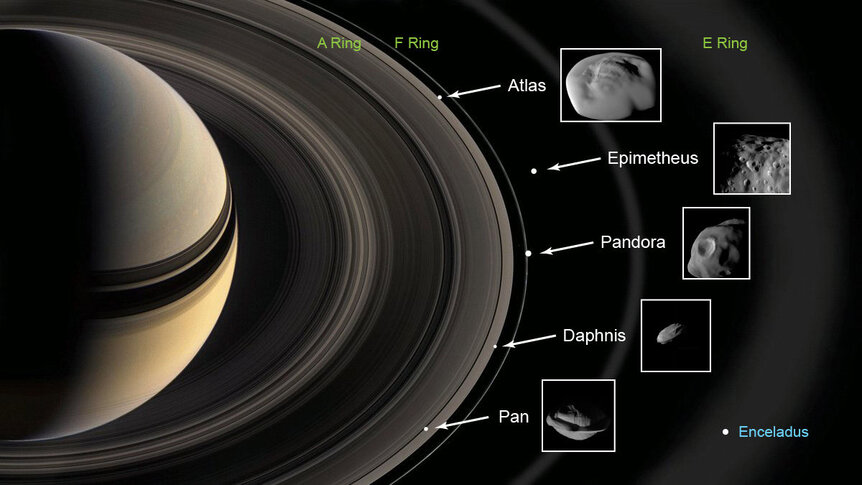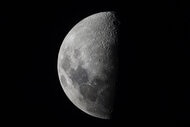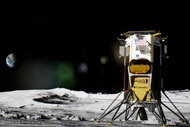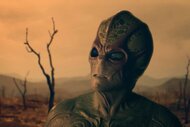Create a free profile to get unlimited access to exclusive videos, sweepstakes, and more!
Saturn’s rings are hiding moons shaped like frozen ravioli. Here’s why.
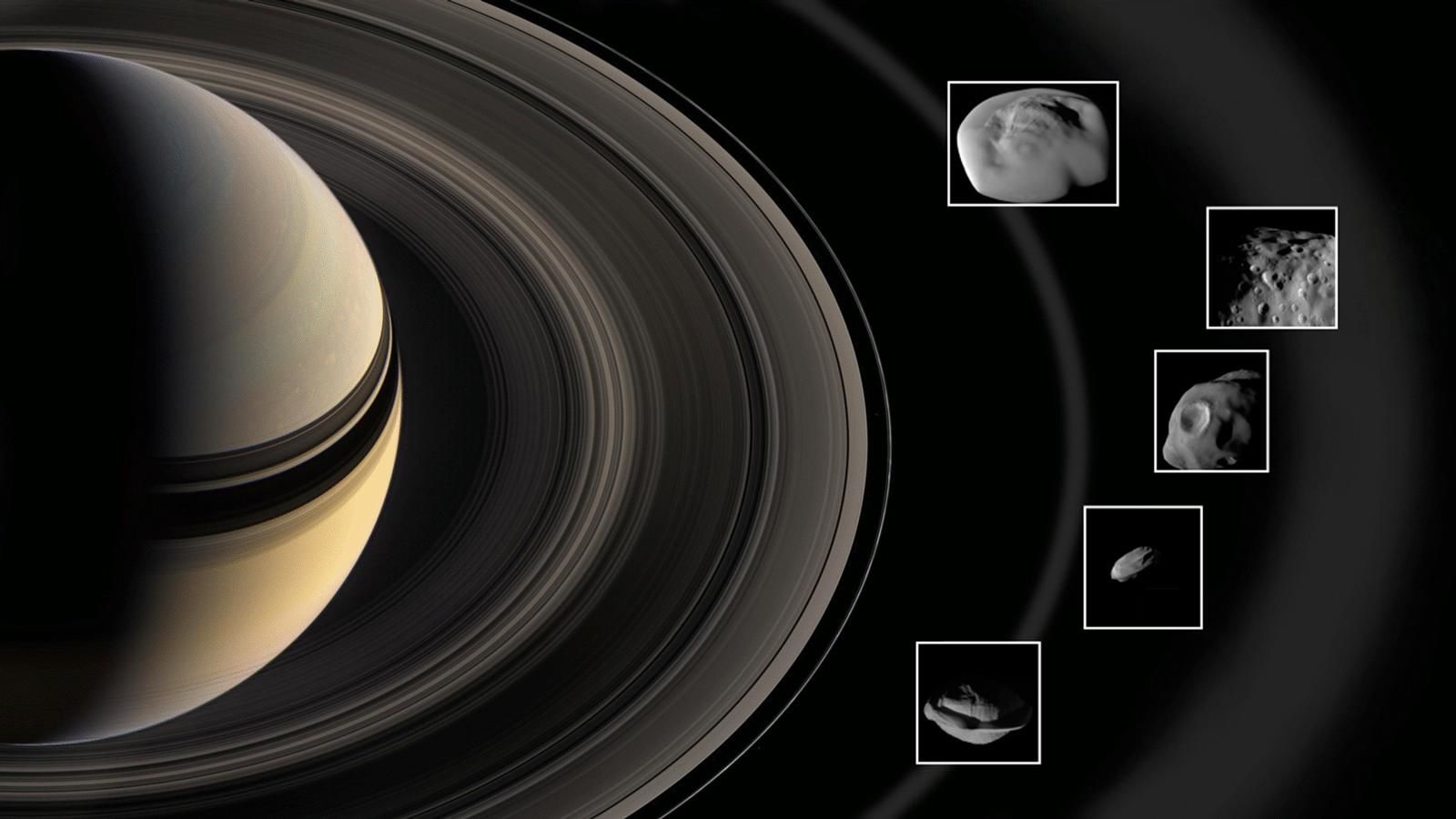
Even from beyond its cosmic grave, NASA’s Cassini spacecraft continues to amaze us with the things it unearthed during its Saturn flybys — like the moons that have been lurking in its rings for billions of years.
When Cassini ventured as close as it would ever get to Saturn, it imaged the moons (which look like space ravioli) in enough detail to reveal that they were covered in the same stuff as its iconic rings. Some of them were even blasted with icy particles from nearby Enceladus. The posthumous images from Cassini’s flyby have given scientists unprecedented close-ups of these really weird satellites.
"The daring, close flybys of these odd little moons let us peer into how they interact with Saturn's rings," said Bonnie Buratti of NASA's Jet Propulsion Laboratory, according to a NASA news post. "We're seeing more evidence of how extremely active and dynamic the Saturn ring and moon system is."
Buratti and her team recently published a study on the moons in the journal Science, based on a mashup of data beamed back from six of the spacecraft’s instruments before it kamikaze-plunged into the atmosphere of Saturn back in 2017. This data gave them evidence that the moons embedded in Saturn’s spectacular rings accumulate the much less glamorous dust and ice those rings are actually made of.
What Cassini saw also proved that the moons have highly porous surfaces, which means they went through different phases of formation. What are believed to be dense pieces of material broken off from a larger object were then covered by material from the rings again and again over billions of years. That also explains the ravioli shape as opposed to the spherical type of moon you usually imagine. Much of that ice and dust stuck around their equators, making them look more like floating blobs than perfect orbs.
"We found these moons are scooping up particles of ice and dust from the rings to form the little skirts around their equators," Buratti said. "A denser body would be more ball-shaped because gravity would pull the material in."
Proto-moons we don’t even know exist might still be forming within the rings of Saturn. It is possible that that the largest ring particles are accreting material that will someday give them moon status, but for now, the existing moons can clue scientists in to how these particles behave. Cassini’s Visible and Infrared Mapping Spectrometer (VIMS) was able to view the moons in both visible and infrared light.
Cassini had never gone deep enough to create a spectral map of the innermost moon’s surface before. It was by analyzing the spectra that VIMS found out what the moons are made of.
Daphnis and Pan, the moons closest to Saturn, predictably have the strangest surfaces, since they have been warped the most by ring stuff. Atlas, Prometheus, and Pandora are farther out but closer to Enceladus, so they also get sprayed with the ice and water that gushes from one of its freezing plumes, which makes them a really sci-fi blue color. Saturn’s entire icy ring (aka the E Ring) is made of Enceladus ice.
Who knows what else Cassini’s ghost is still waiting to reveal to us?
(via NASA JPL)
